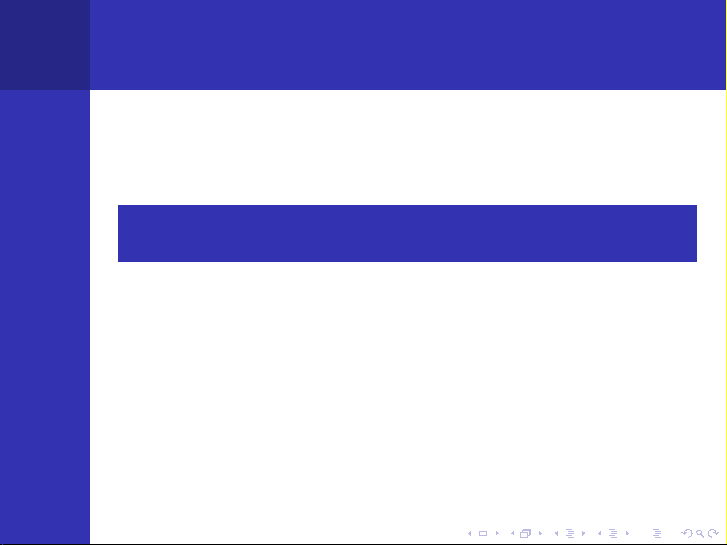




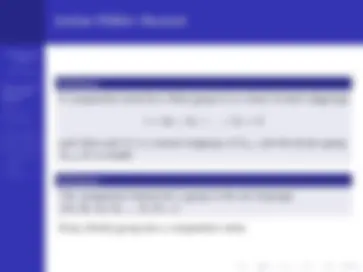
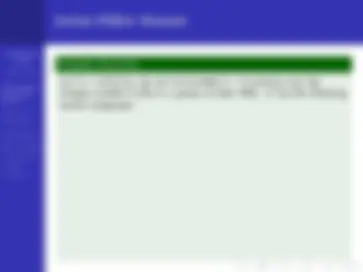





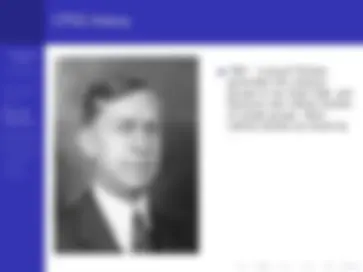
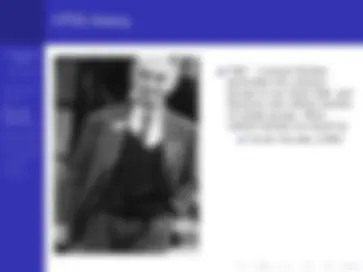
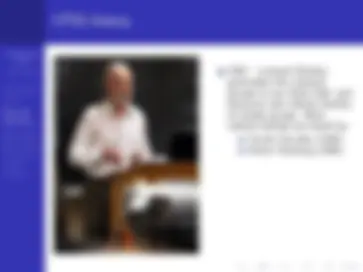
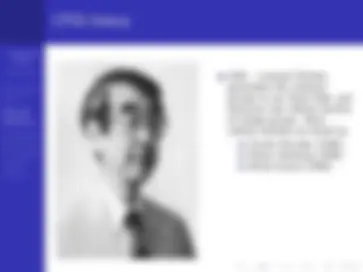
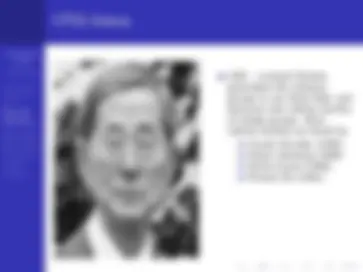
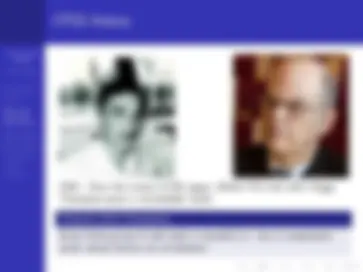
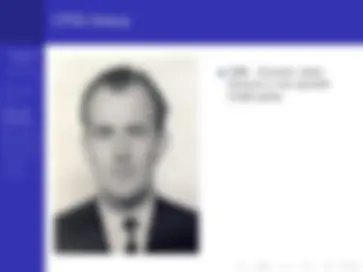
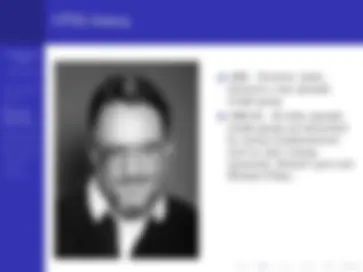


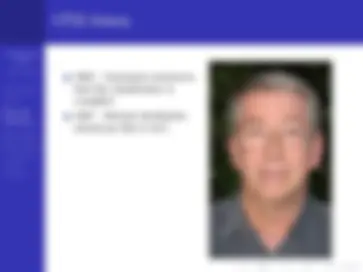
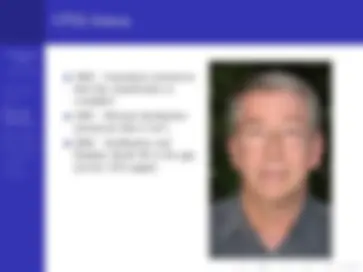


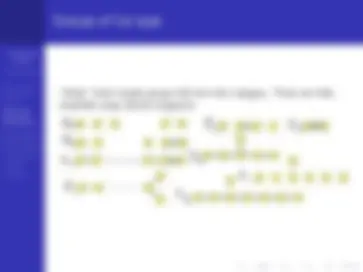





































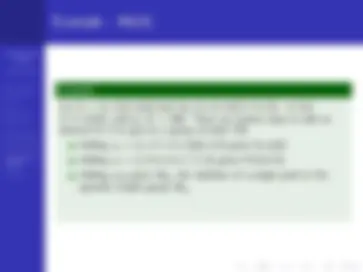








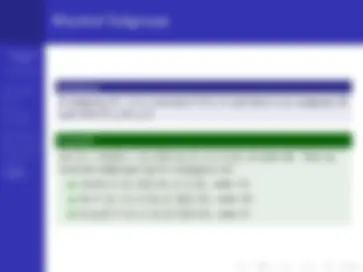










Study with the several resources on Docsity

Earn points by helping other students or get them with a premium plan


Prepare for your exams
Study with the several resources on Docsity

Earn points to download
Earn points by helping other students or get them with a premium plan
Community
Ask the community for help and clear up your study doubts
Discover the best universities in your country according to Docsity users
Free resources
Download our free guides on studying techniques, anxiety management strategies, and thesis advice from Docsity tutors
An introduction to finite simple groups, explaining why they are important in group theory, defining key concepts such as normal subgroups and simple groups, and discussing the history of efforts to classify them. It covers the extension problem, maximal subgroups, and the role of mathematicians like Galois, Chevalley, Steinberg, Suzuki, and Ree.
Typology: Slides
1 / 89

This page cannot be seen from the preview
Don't miss anything!


















































































Finite Simple Groups Daniel Rogers
Why do we care about simple groups? What do we know about simple groups? What questionsare there about groups in light of the classifcation? The extensionproblem Maximalsubgroups
Daniel Rogers
October 28 2014
Finite Simple Groups Daniel Rogers
Why do we care about simple groups? What do we know about simple groups? What questionsare there about groups in light of the classifcation? The extensionproblem Maximalsubgroups
1 Why do we care about simple groups?
2 What do we know about simple groups?
3 What questions are there about groups in light of the classifcation? The extension problem Maximal subgroups
Finite Simple Groups Daniel Rogers
Why do we care about simple groups? What do we know about simple groups? What questionsare there about groups in light of the classifcation? The extensionproblem Maximalsubgroups
Prime numbers are the building blocks of number theory - every integer can be expressed uniquely as a product of primes. As such, a lot of effort goes in to understanding prime numbers. Simple groups are the equivalent notion in group theory - although, as we will see later, there are some crucial differences.
Finite Simple Groups Daniel Rogers
Why do we care about simple groups? What do we know about simple groups? What questionsare there about groups in light of the classifcation? The extensionproblem Maximalsubgroups
Definition A group G is too simple if the only subgroups of G are G and 1.
Finite Simple Groups Daniel Rogers
Why do we care about simple groups? What do we know about simple groups? What questionsare there about groups in light of the classifcation? The extensionproblem Maximalsubgroups
Definition A group G is too simple if the only subgroups of G are G and 1.
Theorem The only too simple groups are cyclic groups of prime order (and the trivial group).
This definition is, as the name suggests, too simple.
Finite Simple Groups Daniel Rogers
Why do we care about simple groups? What do we know about simple groups? What questionsare there about groups in light of the classifcation? The extensionproblem Maximalsubgroups
Definition A normal subgroup N of a group G is a subgroup of G which is closed under conjugation by elements of G ; in other words, ∀ n ∈ N, g ∈ G , g −^1 ng ∈ N.
Definition A group G is simple if it has precisely two normal subgroup; namely G and 1.
Example For p prime, the cyclic group of order p (denoted Cp ) is simple.
Finite Simple Groups Daniel Rogers
Why do we care about simple groups? What do we know about simple groups? What questionsare there about groups in light of the classifcation? The extensionproblem Maximalsubgroups
Example (GL(2,5)) Let G = GL(2, 5), the set of invertible 2 × 2 matrices over the integers modulo 5 (this is a group of order 480). G has the following normal subgroups:
Finite Simple Groups Daniel Rogers
Why do we care about simple groups? What do we know about simple groups? What questionsare there about groups in light of the classifcation? The extensionproblem Maximalsubgroups
Example (GL(2,5)) Let G = GL(2, 5), the set of invertible 2 × 2 matrices over the integers modulo 5 (this is a group of order 480). G has the following normal subgroups: ±SL(2, 5), the group of all matrices with determinant ±1 (order 240). SL(2, 5), the group of all matrices with determinant 1 (order 120). Z , the group of all scalar matrices (order 4). 1 2 Z^ , the group consisting of^ I^ , the identity, and^ −I^ (order 2). 1, the trivial group (order 1).
Finite Simple Groups Daniel Rogers
Why do we care about simple groups? What do we know about simple groups? What questionsare there about groups in light of the classifcation? The extensionproblem Maximalsubgroups
Example (GL(2,5))
1 E 12 Z E Z E ±SL(2, 5) E G 1 E 12 Z E SL(2, 5) E ±SL(2, 5) E G. These composition series, although different, have the same (multiset of) composition factors, namely {C 2 , C 2 , C 2 , PSL(2, 5) ∼= Alt(5)}.
Finite Simple Groups Daniel Rogers
Why do we care about simple groups? What do we know about simple groups? What questionsare there about groups in light of the classifcation? The extensionproblem Maximalsubgroups
Theorem (Jordan-H¨older) Any two composition series for a group G have the same composition factors, up to permutation and isomorphism.
This gives us a well-defined notion of ’factors’ of a group, somewhat equivalent to the notion of primes in number theory. Thus, by understanding all simple groups we understand all the factors of a group.
Finite Simple Groups Daniel Rogers
Why do we care about simple groups? What do we know about simple groups? What questionsare there about groups in light of the classifcation? The extensionproblem Maximalsubgroups
1832 - ´Evariste Galois defines a normal subgroup and proves that Alt(n) is simple for n > 4.
Finite Simple Groups Daniel Rogers
Why do we care about simple groups? What do we know about simple groups? What questionsare there about groups in light of the classifcation? The extensionproblem Maximalsubgroups
1832 - ´Evariste Galois defines a normal subgroup and proves that Alt(n) is simple for n > 4. 1870 - Camille Jordan discovers 4 classes of simple groups, which we now call the classical groups, over fields of prime order.
Finite Simple Groups Daniel Rogers
Why do we care about simple groups? What do we know about simple groups? What questionsare there about groups in light of the classifcation? The extensionproblem Maximalsubgroups
1832 - Evariste Galois defines´ a normal subgroup and proves that Alt(n) is simple for n > 4. 1870 - Camille Jordan discovers 4 classes of simple groups, which we now call the classical groups, over fields of prime order. 1873 - Emile Mathieu´ discovers 5 ’sporadic’ simple groups (ones that are not part of infinite families). 1892 - Otto H¨older first asks for a classification of finite simple groups.
Finite Simple Groups Daniel Rogers
Why do we care about simple groups? What do we know about simple groups? What questionsare there about groups in light of the classifcation? The extensionproblem Maximalsubgroups
1901 - Leonard Dickson generalises the classical groups to any finite field, and discovers new infinite families of simple groups. More infinite families are found by: